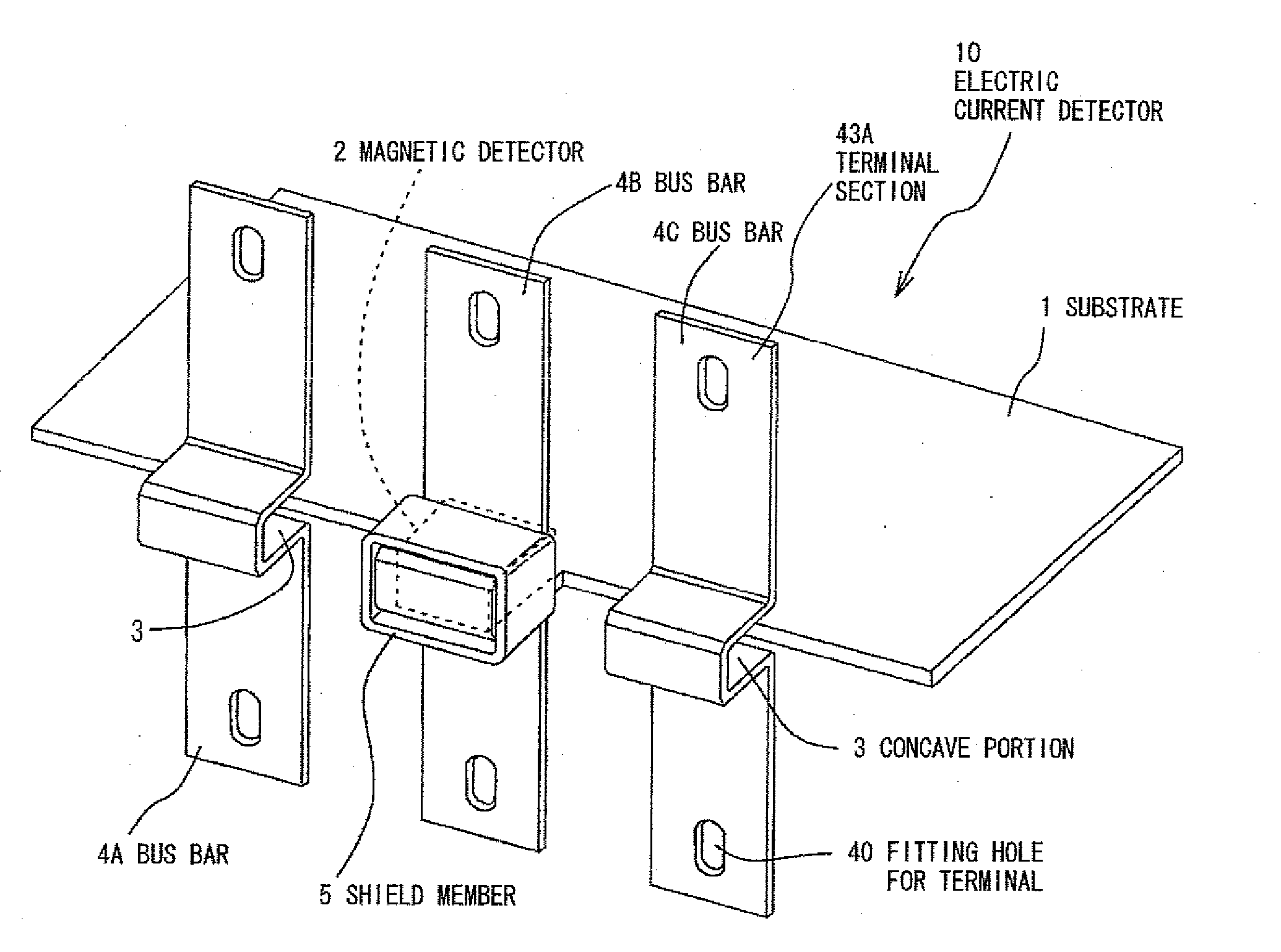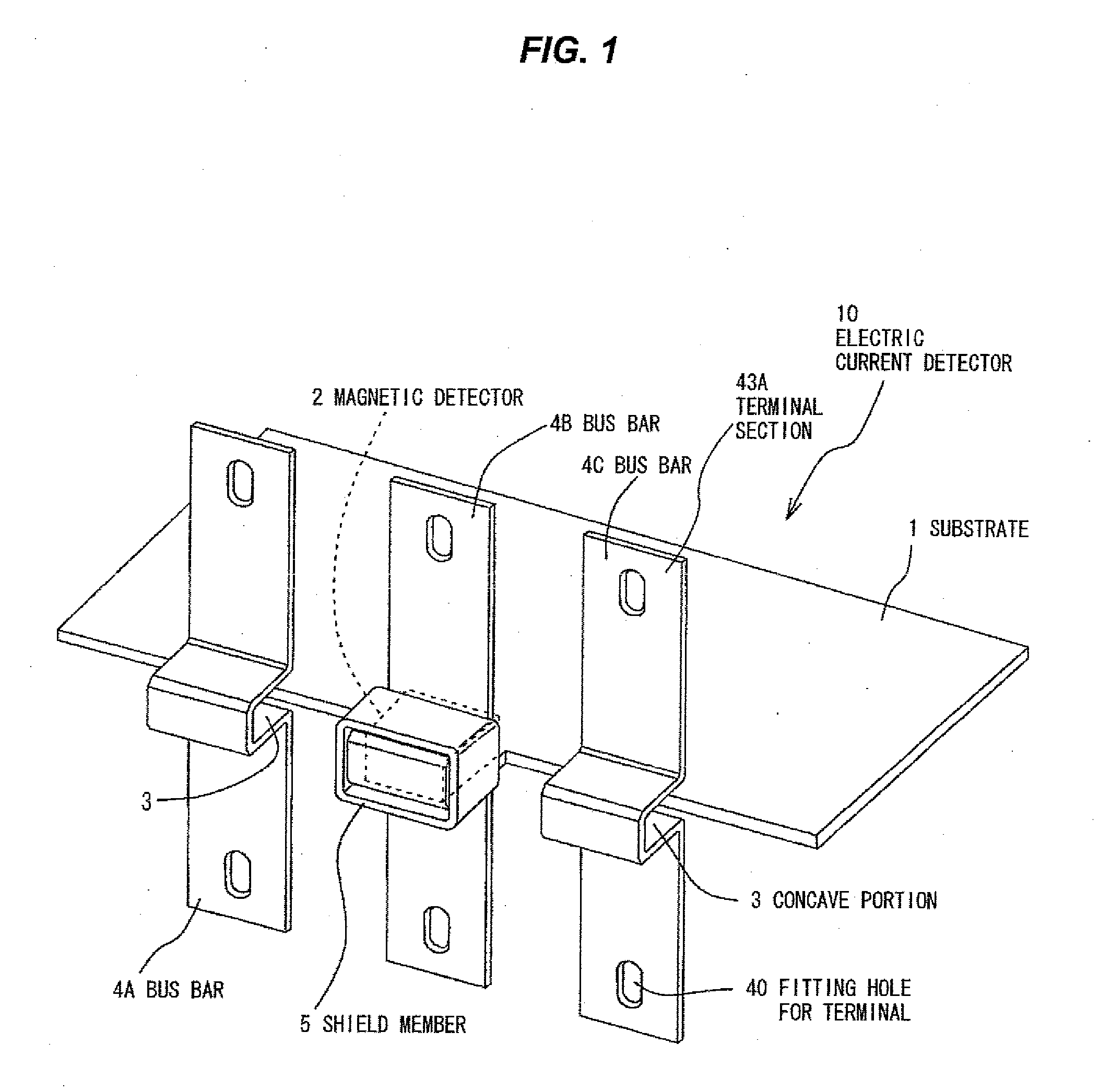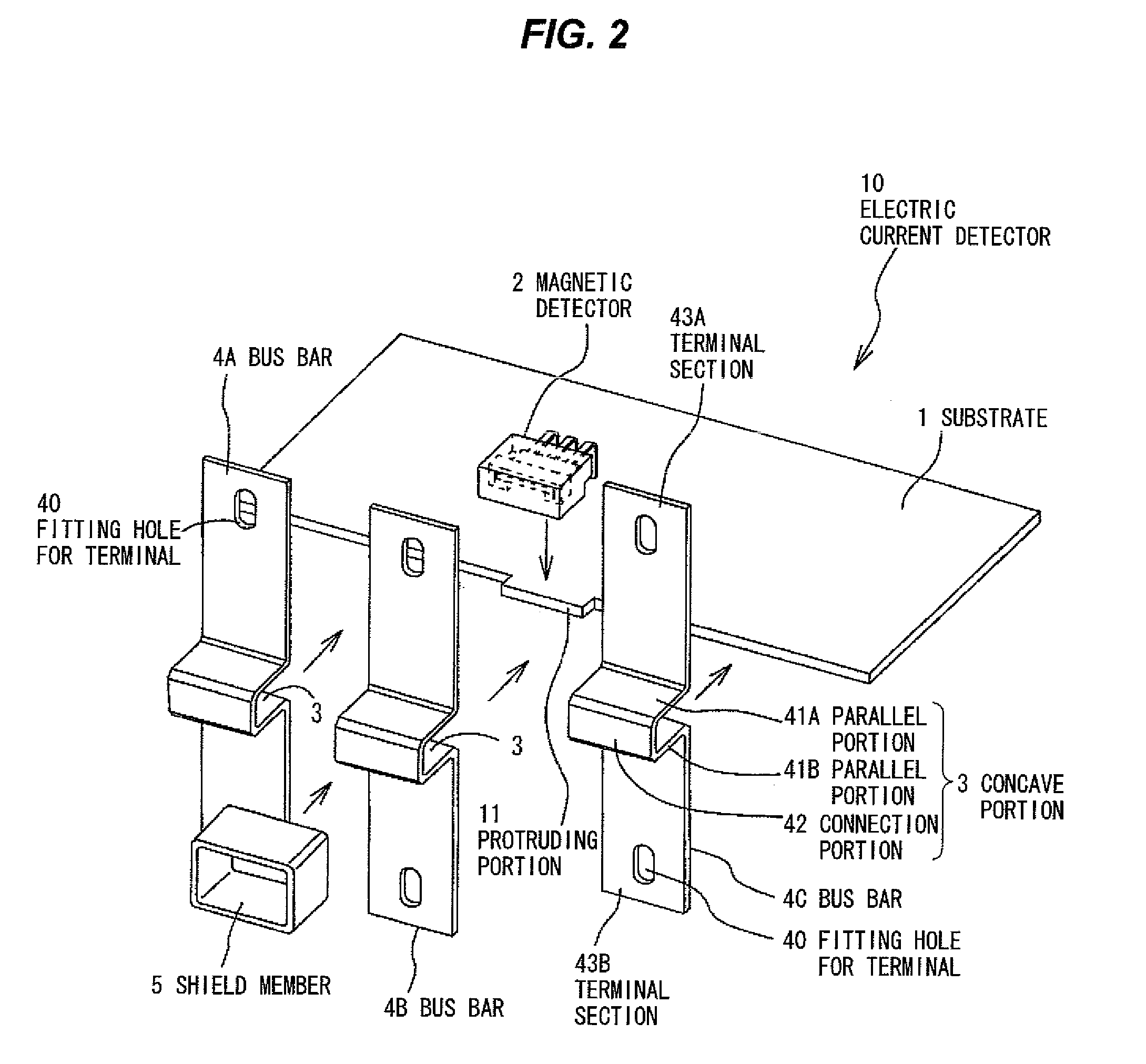Electric current detector
a technology of electric current detector and detector, applied in the direction of magnetic measurement, instruments, nanomagnetism, etc., can solve the problems of decreasing detection accuracy and growing the size of conventional electric current detector, and achieve the effect of sufficient detection sensitivity and improved detection accuracy
- Summary
- Abstract
- Description
- Claims
- Application Information
AI Technical Summary
Benefits of technology
Problems solved by technology
Method used
Image
Examples
example 1
[0074]FIG. 7 is a characteristic graphical representation wherein a relationship between the electric current of a bus bar and the magnetic flux given to a magnetic detector is shown. The magnetic flux density in the case when an electric current of 0 to 350 A is applied to the bus bar 4B in the magnetic detector 2 having the construction shown in FIGS. 1 and 2 is measured (the ordinate on the left side of FIG. 7).
[0075] As a result, magnetic flux density in response to the direction of electric current can be measured in a linear characteristic region on the border of about 30 (mT) as shown in FIG. 7. Namely, the direction of electric current can be detected.
[0076] On one hand, a degree of influence (%) due to the bus bars 4A and 4C adjacent to the bus bar 4B is also measured. The measurement is conducted in such that an electric current of from 0 to 350 A is applied step-by-step to the bus bar 4B, while an electric current of 350 A (fixed) is applied to the bus bars 4A and 4C, r...
example 2
[0078]FIG. 8 is a characteristic graphical representation showing a relationship between the electric current and the magnetic flux of the magnetic detector 2 wherein the shield member 5 is provided; and FIG. 9 is Comparative Example of a characteristic graphical representation showing a relationship between the electric current and the magnetic flux of the magnetic detector 2 wherein the shield member 5 is not provided.
[0079] In Example 2 shown in FIG. 8, a magnetic flux density in the case where the electric current flowing through the bus bar 4B is 300 A is 22 mT, while in Comparative Example of FIG. 9, a magnetic flux density in the case where the electric current flowing through the bus bar 4B is 300 A is 14.5 mT. Accordingly, the magnetic flux density in Example 2 is about 1.52 times higher than that of Comparative Example. This means that the magnetic flux density increases, in other words, sensitivity increases as a result of providing the shield member 5. In addition, it b...
example 3
[0080]FIGS. 10A and 10B are perspective views each showing another shape of the bus bar as an electric conductor wherein a bus bar 4D has a first portion 41C and a second portion 41D being different circular arc profile from one another surrounding the concave portion 3 of the bus bar 4D. The first magnetic flux generated due to the electric current flowing through the first portion 41C is added to the second magnetic flux generated due to the electric current flowing through the second portion 41D in the region of the concave portion 3. Furthermore, the bus bar 4E having the shape shown inFIG. 10B is the same as that of the bus bar 4D mentioned above wherein the bus bar 4E has a first portion 41E and a second portion 41F being flat different portions from one another surrounding the concave portion 3 of the bus bar 4E. The first magnetic flux generated due to the electric current flowing through the first portion 41E is added to the second magnetic flux generated due to the electri...
PUM
 Login to View More
Login to View More Abstract
Description
Claims
Application Information
 Login to View More
Login to View More - R&D
- Intellectual Property
- Life Sciences
- Materials
- Tech Scout
- Unparalleled Data Quality
- Higher Quality Content
- 60% Fewer Hallucinations
Browse by: Latest US Patents, China's latest patents, Technical Efficacy Thesaurus, Application Domain, Technology Topic, Popular Technical Reports.
© 2025 PatSnap. All rights reserved.Legal|Privacy policy|Modern Slavery Act Transparency Statement|Sitemap|About US| Contact US: help@patsnap.com



